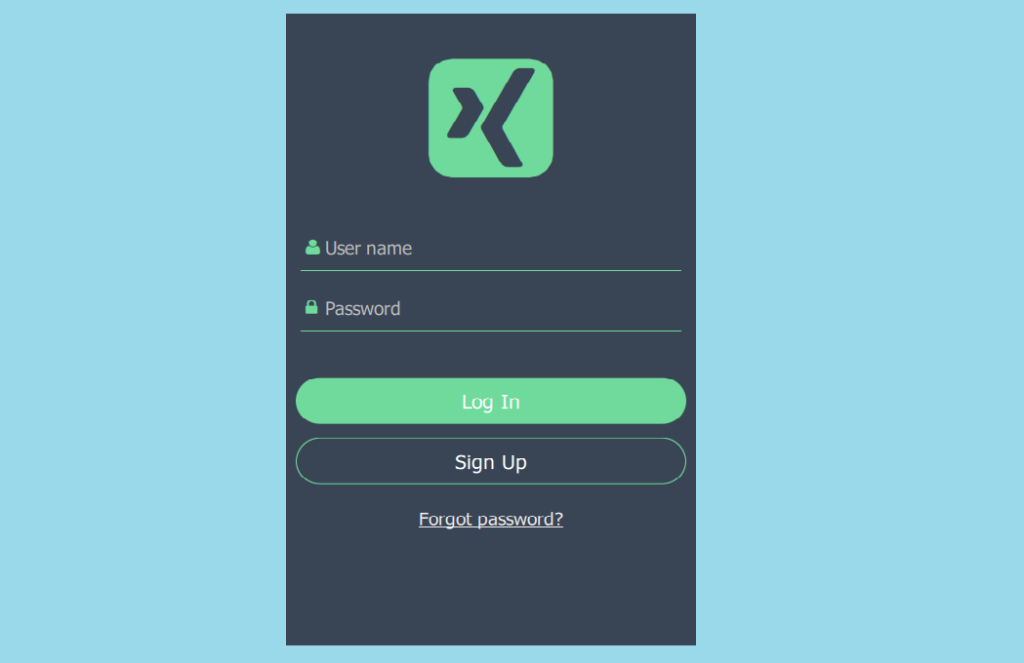Qt Quick provides an option for reading and writing SQLite databases using the module “QtQuick.LocalStorage”. These databases are user-specific and QML-specific, but accessible to all QML applications. They are stored in the Databases subdirectory of QQmlEngine::offlineStoragePath(), currently as SQLite databases. Database connections are automatically closed during Javascript garbage collection.
In this blog post I am going to demonstrate how we can write a simple user based login application using QML which uses LocalStorage to store the user credentials. This demo application has following features.
- New User Registration
- User Login
- Authentication and error handling
- Password retrieval
This application is spitted into multiple screens and uses StackView show the screens. Following are the list of screens which we will be using in this demo application.
- LogInPage
- RegisterScreen
- PasswordResetPage
- UserInfoPage
The icons which you can see in this application are created by using “Font Awesome” font. I have used the FontLoader from QML for this purpose. And this font object is used for all the Text items to show their respective icons using Unicode strings.
FontLoader {
id: fontAwesome
name: "fontawesome"
source: "qrc:/fontawesome-webfont.ttf"
}
In this application I have used a PopUp item to show all the warnings and error messages of this application. This popup is placed at the bottom of the screen. I have also introduced a Timer along this popup to close it automatically after 2 seconds.
//Popup to show messages or warnings on the bottom position of the screen
Popup {
id: popup
property alias popMessage: message.text
background: Rectangle {
implicitWidth: rootWindow.width
implicitHeight: 60
color: "#b44"
}
y: rootWindow.height
modal: true
focus: true
closePolicy: Popup.CloseOnPressOutside
Text {
id: message
anchors.centerIn: parent
font.pointSize: 12
color: "#ffffff"
}
onOpened: popupClose.start()
}
// Popup will be closed automatically in 2 seconds after its opened
Timer {
id: popupClose
interval: 1000
onTriggered: popup.close()
}
I have used a JavScript file “backend.js” to validate the user credentials for login and registration.
In my “main.qml” file I have used a StackView as a container and it loads “LogInPage.qml” as the initial page. And here I also initializes the Database and create a table to store user details. Instance of this database will be used across the application to store/retrieve user data.
Following are the main operation which I am performing on the database.
- Create database and create a new table for user credentials
- Insert user credentials in database
- Retrieve password for the given user for authentication
- Retrieve password for the given user and hint for password retrieval
Below is my application’s main.qml file.
main.qml:
import QtQuick 2.7
import QtQuick.Controls 2.0
import QtQuick.Layouts 1.1
import QtQuick.LocalStorage 2.0
import "backend.js" as Backend
ApplicationWindow {
id: rootWindow
visible: true
width: 420
height: 680
title: qsTr("Login Demo")
flags: Qt.FramelessWindowHint
property color backGroundColor : "#394454"
property color mainAppColor: "#6fda9c" //"#FA6B65"
property color mainTextCOlor: "#f0f0f0"
property var dataBase
FontLoader {
id: fontAwesome
name: "fontawesome"
source: "qrc:/fontawesome-webfont.ttf"
}
// Main stackview
StackView{
id: stackView
focus: true
anchors.fill: parent
}
// After loading show initial Login Page
Component.onCompleted: {
stackView.push("qrc:/LogInPage.qml") //initial page
dataBase = userDataBase()
console.log(dataBase.version)
}
//Popup to show messages or warnings on the bottom postion of the screen
Popup {
id: popup
property alias popMessage: message.text
background: Rectangle {
implicitWidth: rootWindow.width
implicitHeight: 60
color: "#b44"
}
y: rootWindow.height
modal: true
focus: true
closePolicy: Popup.CloseOnPressOutside
Text {
id: message
anchors.centerIn: parent
font.pointSize: 12
color: "#ffffff"
}
onOpened: popupClose.start()
}
// Popup will be closed automatically in 2 seconds after its opened
Timer {
id: popupClose
interval: 1000
onTriggered: popup.close()
}
// Create and initialize the database
function userDataBase()
{
var db = LocalStorage.openDatabaseSync("UserLoginApp", "1.0", "Login example!", 1000000);
db.transaction(function(tx) {
tx.executeSql('CREATE TABLE IF NOT EXISTS UserDetails(username TEXT, password TEXT, hint TEXT)');
})
return db;
}
// Register New user
function registerNewUser(uname, pword, pword2, hint)
{
var ret = Backend.validateRegisterCredentials(uname, pword, pword2, hint)
var message = ""
switch(ret)
{
case 0: message = "Valid details!"
break;
case 1: message = "Missing credentials!"
break;
case 2: message = "Password does not match!"
break;
}
if(0 !== ret)
{
popup.popMessage = message
popup.open()
return
}
dataBase.transaction(function(tx) {
var results = tx.executeSql('SELECT password FROM UserDetails WHERE username=?;', uname);
if(results.rows.length !== 0)
{
popup.popMessage = "User already exist!"
popup.open()
return
}
tx.executeSql('INSERT INTO UserDetails VALUES(?, ?, ?)', [ uname, pword, hint ]);
showUserInfo(uname) // goto user info page
})
}
// Login users
function loginUser(uname, pword)
{
var ret = Backend.validateUserCredentials(uname, pword)
var message = ""
if(ret)
{
message = "Missing credentials!"
popup.popMessage = message
popup.open()
return
}
dataBase.transaction(function(tx) {
var results = tx.executeSql('SELECT password FROM UserDetails WHERE username=?;', uname);
if(results.rows.length === 0)
{
message = "User not registered!"
popup.popMessage = message
popup.open()
}
else if(results.rows.item(0).password !== pword)
{
message = "Invalid credentials!"
popup.popMessage = message
popup.open()
}
else
{
console.log("Login Success!")
showUserInfo(uname)
}
})
}
// Retrieve password using password hint
function retrievePassword(uname, phint)
{
var ret = Backend.validateUserCredentials(uname, phint)
var message = ""
var pword = ""
if(ret)
{
message = "Missing credentials!"
popup.popMessage = message
popup.open()
return ""
}
dataBase.transaction(function(tx) {
var results = tx.executeSql('SELECT password FROM UserDetails WHERE username=? AND hint=?;', [uname, phint]);
if(results.rows.length === 0)
{
message = "User not found!"
popup.popMessage = message
popup.open()
}
else
{
pword = results.rows.item(0).password
}
})
return pword
}
// Show UserInfo page
function showUserInfo(uname)
{
stackView.replace("qrc:/UserInfoPage.qml", {"userName": uname})
}
// Logout and show login page
function logoutSession()
{
stackView.replace("qrc:/LogInPage.qml")
}
// Show Password reset page
function forgotPassword()
{
stackView.replace("qrc:/PasswordResetPage.qml")
}
}
Below you can see the screenshots from this application.
Source code:

Leave a comment